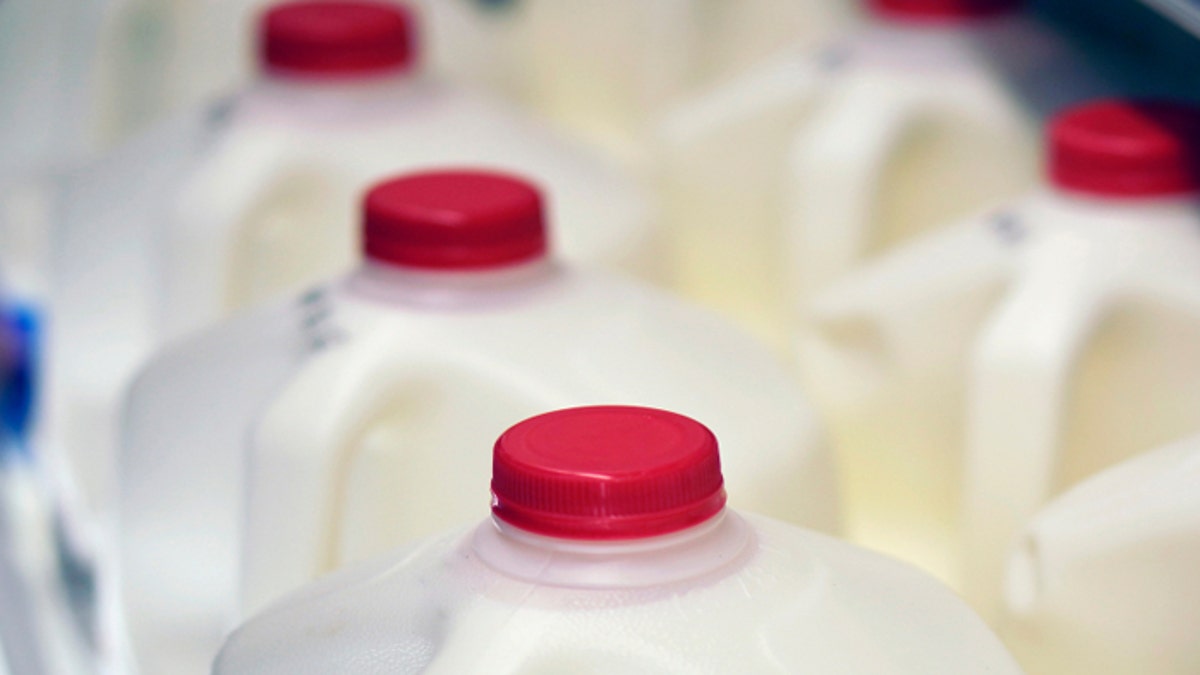
Cow’s milk has been touted as one of the healthiest foods you can give your growing baby or toddler. Yet in recent years, some parents are filling up sippy cups with non-dairy alternatives like almond milk and coconut milk instead.
While some experts agree this is a wise choice, others say these alternatives are causing kids to miss out on key nutrients they need.
Nutrition benefits of cow’s milk
“Cows milk has the best nutrition for toddlers and children over age 1,” according to Dr. Tanya Remer Altmann, a pediatrician in Los Angeles and a spokesperson for the American Academy of Pediatrics. “It has the right amount of fat, carbohydrates and 9 essential nutrients that many kids lack.”
Cow’s milk also has a lot of protein— about 8 to 10 grams per cup— and is a good source of calcium, potassium and vitamin D.
“For young children, they can become protein and calorie deficient if they’re not getting enough cow’s milk,” Altmann said.
The American Academy of Pediatrics recommends whole milk after age 1, then 1 percent or skim milk at 2 years old. Although kids need fat for brain development, experts agree, most kids are likely eating enough fat anyway.
Is cow’s milk necessary?
“Cow’s milk is essential for cows and certainly not essential for humans,” according to Dr. Wendy Sue Swanson, a pediatrician, executive director of digital health at Seattle Children’s Hospital and author of “Mama Doc Medicine.”
“There’s just no question that cow’s milk is just one option for feeding your baby the calories, protein and fat that they need for growth and development,” she said.
Although cow’s milk has high amounts of protein, phosphorous and calcium, babies grow slower and they require more fat and carbohydrates, which are actually higher in human breast milk.
“We’re the only species that drinks another species’ milk and thinks that it’s required,” said Yuri Elkaim, New York Times best-selling author of “The All-Day Energy Diet.” “Cow’s milk is perfect for cows but in the human body it’s not the best thing.”
Although cow’s milk is a great source of calcium, some experts say it’s not the best source of the bone-building nutrient. For starters, cow’s milk is acid-forming so it actually causes our bones to become depleted of calcium. Plus, the absorption rate of cow’s milk is 32 percent, but is higher in other foods like green leafy vegetables.
Calcium’s relationship with minerals, in particular phosphorus, is important too.
“Phosphorus inhibits calcium absorption in the digestive track,” Elkhaim said. Cow’s milk has a calcium to phosphorus ratio of 1.27 to 1, whereas human breast milk has a ratio of 2.35 to 1. So if you’re drinking lots of cow’s milk, you won’t absorb as much calcium.
What’s more, countries that drink the most milk tend to have the highest rate of hip fractures and osteoporosis markers. In fact, a recent study in the journal BMJ found that men and women over 39 who drink more than three cups of milk daily had a higher risk for bone fractures and even death, compared to drinking less than one glass daily.
Some studies show that dairy is also linked to autoimmune disorders like Type 1 diabetes, as well as heart disease and cancer. Although looking at other factors that contribute to our toxic load is important, Elkaim said.
Another concern is that high levels of phthalates have been found in cow’s milk. A study in the Nature Journal of Exposure Science and Environmental Epidemiology found that children and adults who avoided food (including dairy) in plastic containers, and ate local organic produce still had high levels of the toxin.
Nutritional benefits of milk alternatives vary.
Non-dairy milks, except for soy, have less protein than cow’s milk, and the nutritional content varies across brands.
“Plus, all the vitamins are added in, so you have to shake it up really well,” Altmann said.
A recent study in the Canadian Medical Association Journal found that children who drank non-dairy alternatives were more likely to have low vitamin D levels than those who drank cow’s milk.
For some children who have milk sensitivities, intolerances or allergies, soy milk is the next best alternative because it’s the closest to cow’s milk, Altmann said. Yet some studies suggest the isoflavones in soy that mimic estrogen could affect children’s development and be linked to early puberty.
Rice milk can be a good option too, but depending on brand, it may lack nutrition. Plus, there is also concern about arsenic levels in rice.
Making sure your child gets enough calcium through other food sources can be tough, especially because toddlers are notoriously picky eaters. So even if he eats green leafy vegetables, for example, chances are it’s not enough.
“It’s really hard to get enough calcium and Vitamin D without dairy products,” Altmann said.
Milk, in moderation.
The American Academy of Pediatrics recommends after age 1, children drink two cups of milk a day, but no more than 24 ounces. Any more, and they could be low in iron.
Although cow’s milk is a convenient way to get vitamin D, if you choose non-dairy alternatives, milk doesn’t have to be the primary way to get the nutrient.
Regardless of the type of milk you choose to feed your tot, it’s important to work with your pediatrician to make sure he’s getting enough of the nutrients he needs.
“Kids don’t need milk after [age] 1, they need calcium, vitamins, fiber, energy and fat,” Swanson said.




















